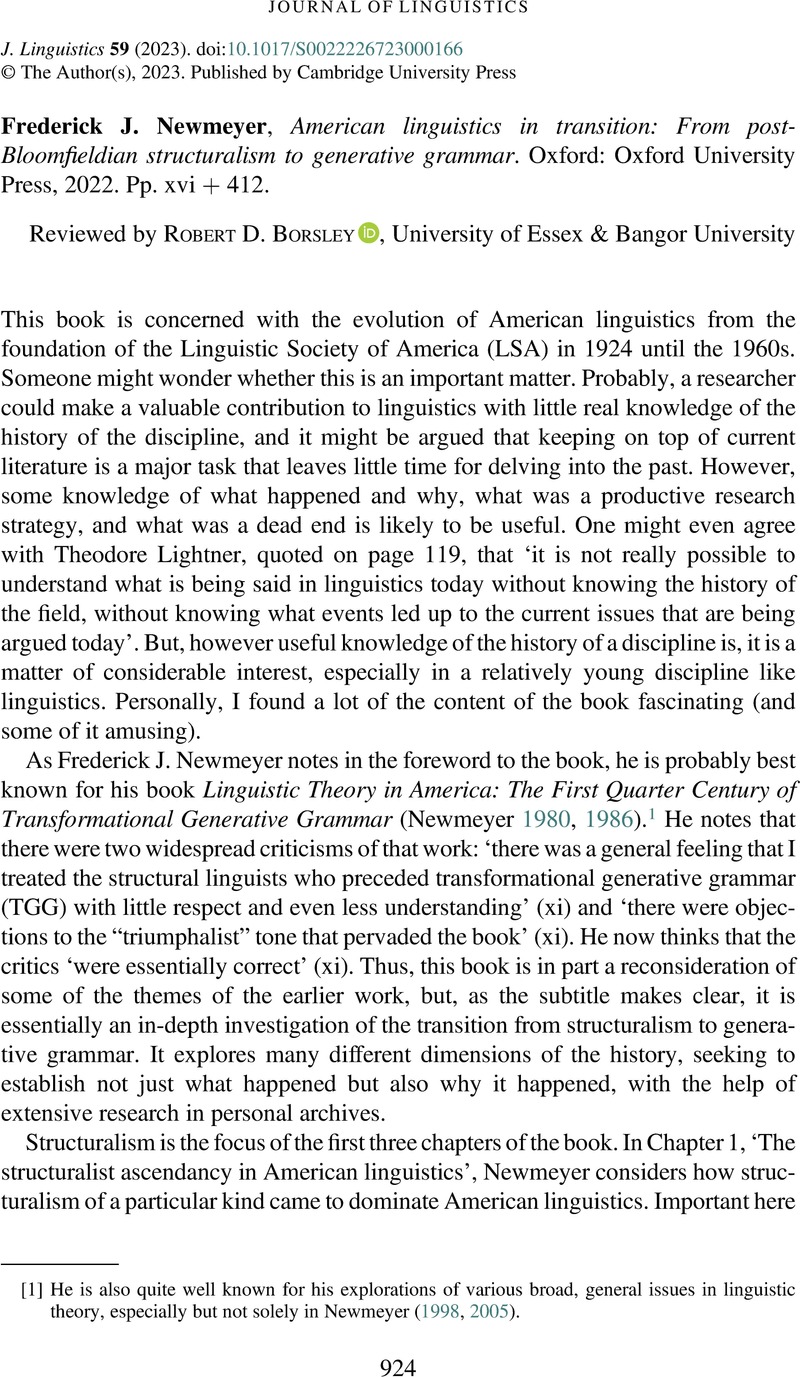No CrossRef data available.
Article contents
Frederick J. Newmeyer, American linguistics in transition: From post-Bloomfieldian structuralism to generative grammar. Oxford: Oxford University Press, 2022. Pp. xvi + 412.
Review products
Frederick J. Newmeyer, American linguistics in transition: From post-Bloomfieldian structuralism to generative grammar. Oxford: Oxford University Press, 2022. Pp. xvi + 412.
Published online by Cambridge University Press: 23 May 2023
Abstract
An abstract is not available for this content so a preview has been provided. Please use the Get access link above for information on how to access this content.

- Type
- Book Review
- Information
- Copyright
- © The Author(s), 2023. Published by Cambridge University Press
References
REFERENCES
Chomsky, Noam. 1970. Remarks on nominalization. In Jacobs, Roderick & Rosenbaum, Peter (eds.), Readings in English transformational grammar, 184–221. Waltham, MA: Ginn.Google Scholar
Hockett, Charles F. 1980. Preserving the heritage. In Davis, Boyd & O’Cain, Raymond (eds.), First person singular: Papers from the Conference on an Oral Archive for the History of American Linguistics, 99–107. Amsterdam: John Benjamins.CrossRefGoogle Scholar
Joos, Martin (ed.). 1957. Readings in linguistics: The development of descriptive linguistics in America since 1925. New York: American Council of Learned Societies.Google Scholar
Knight, Chris. 2017. Decoding Chomsky: Science and revolutionary politics. New Haven, CT: Yale University Press.Google Scholar
Newmeyer, Frederick J. 1980. Linguistic theory in America: The first quarter century of transformational generative grammar. New York: Academic Press.Google Scholar
Newmeyer, Frederick J. 1986. Linguistic theory in America, 2nd edn. New York: Academic Press.CrossRefGoogle Scholar
Newmeyer, Frederick J. 1998. Language form and language function. Cambridge, MA: MIT Press.Google Scholar
Newmeyer, Frederick J. 2005. Possible and probable languages: A generative perspective on linguistic typology. Oxford: Oxford University Press.CrossRefGoogle Scholar
Sag, Ivan A. & Wasow, Thomas. 2015. Flexible processing and the design of grammar. Journal of Psycholinguistic Research 44.1, 47–63.CrossRefGoogle ScholarPubMed



